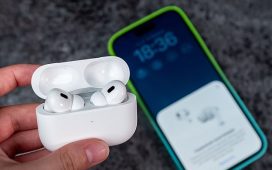A temporary electronic tattoo is capable of detecting the wearer’s levels of excitement and stress via the skin’s electrical conductivity. The “e-tattoo” device is worn on the palm, and relays readings to a connected smartphone — was developed by a team of researchers from Texas. It allows individuals with anxiety and depression to better track their emotional state without needing to wear a bulky medical device.
It was developed by biomedical engineer Professor Nanshu Lu of the University of Texas at Austin and her colleagues.
Prof. Lu told The Dallas Morning News: “This is such an ultra-thin and invisible tattoo.
“But, mechanically, it’s resilient enough to survive all kinds of activities.”
In fact, in tests, the palm tattoo was capable of staying on for 15 hours while the wearers did everything from exercising and sleeping to eating and driving.
The tattoo works by measuring the electrical conductivity of the skin, which is influenced by how much moisture is being produced by the so-called eccrine sweat glands, the activity of which is increased by strong emotions like excitement and stress.
Some smartwatches employ the same principle by measuring sweat levels of the wrist. The advantage of taking measurements on the palms, however, is that this area of the body has the highest concentration of eccrine sweat glands, allowing for more accurate readings.
The problem, however, is that the palm is similarly an active and sweaty part of the body. Scientists currently use gel electrodes to measure sweat concentrations on the palm — but these are stiff and bulky, and prone to falling off, especially when the wearer is on the move.
In contrast, the researchers’ device is applied to the palm much like a temporary tattoo. It is made of overlapping, snaking ribbons of graphene and gold-on-polyimide — the latter of which is just 750 nanometres thick. (For comparison, a sheet of paper is relatively chunky, at some 100,000 nanometres in thickness.)
READ MORE: Rats living in the sewers of New York City are a reservoir for Covid
The gold layers snake out down the palm and connect to a wristband, which wirelessly transmits the data collected by the tattoo to a paired smartphone where it can be studied.
In tests, Prof. Lu and her colleagues first confirmed that the e-tattoo was capable of giving similar readings to that of gel electrodes.
They then recruited two participants for their 15-hour-long test. One subject was given the e-tattoo to wear, while another was given a standard pair of gel electrodes connected to the same kind of wristband as the tattoo.
During the evaluation period, the gel electrodes fell off of the palm of the corresponding participant three–five times. In contrast, the e-tattoo stayed fixed in place the whole time.
With their initial study complete, Prof. Lu and her team are now working to refine their tattoo design to provide more accurate and continuous information about excitement and stress levels.
Professor Aaron Franklin — an electrical engineer from North Carolina’s Duke University who was not involved in the present study — told The Dallas Morning News that the e-tattoo concept has two hurdles to overcome before they can be widely adopted.
The first is ensuring consistent readings — but the second is ensuring that they can work across different patients, who can sweat to varied degrees and have different skin types.
He concluded: “Those are the kinds of big problems that await any technology that’s going to move past a really nice research paper, which this is.”
The full findings of the study were published in the journal Nature Communications.










